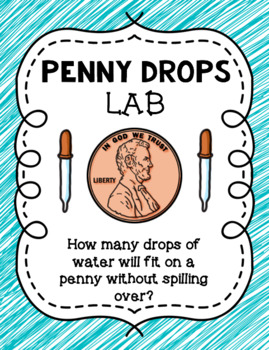Penny Drop Lab---Measuring Milliliters & Making Estimates
Miss Bullard's Classroom
13 Followers
Grade Levels
1st - 12th, Homeschool
Subjects
Resource Type
Standards
CCSS3.MD.A.2
CCSS4.MD.A.1
Formats Included
- PDF
Pages
5 pages
Miss Bullard's Classroom
13 Followers
What educators are saying
I love doing Drops on a Penny at the beginning of the year with my 3rd graders. It teaches them to estimate, observe, and record data. It helps them begin to think like a scientist!
Description
This lab is such a fun and educational way to get students interacting with one another while being hands on in the classroom.
Included in this download:
- Lab Directions & Material List
- Color Data Worksheet
- B/W Data Worksheet
Total Pages
5 pages
Answer Key
N/A
Teaching Duration
30 minutes
Report this resource to TPT
Reported resources will be reviewed by our team. Report this resource to let us know if this resource violates TPT’s content guidelines.
Standards
to see state-specific standards (only available in the US).
CCSS3.MD.A.2
Measure and estimate liquid volumes and masses of objects using standard units of grams (g), kilograms (kg), and liters (l). Add, subtract, multiply, or divide to solve one-step word problems involving masses or volumes that are given in the same units, e.g., by using drawings (such as a beaker with a measurement scale) to represent the problem.
CCSS4.MD.A.1
Know relative sizes of measurement units within one system of units including km, m, cm; kg, g; lb, oz.; l, ml; hr, min, sec. Within a single system of measurement, express measurements in a larger unit in terms of a smaller unit. Record measurement equivalents in a two-column table. For example, know that 1 ft is 12 times as long as 1 in. Express the length of a 4 ft snake as 48 in. Generate a conversion table for feet and inches listing the number pairs (1, 12), (2, 24), (3, 36),...



